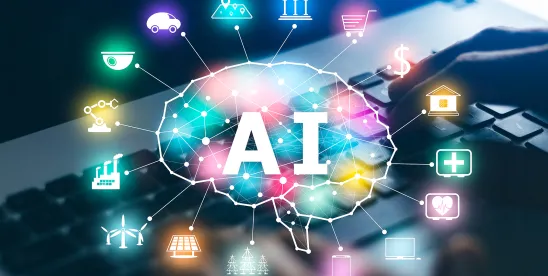As the federal government continues to modernize procurement processes and embrace emerging technologies, contractors are increasingly turning to artificial intelligence (AI) tools to streamline their responses to solicitations. From drafting technical proposals to analyzing past performance data, AI offers considerable potential to improve efficiency, accuracy, and competitiveness. However, as with any transformative tool, the use of AI in federal contracting also raises important legal, ethical, and compliance issues that contractors must carefully navigate.
The Role of AI in Proposal Development
AI technologies can assist at nearly every stage of preparing a response to a government solicitation, including:
- Opportunity Analysis – AI-powered platforms can review and flag relevant solicitations from SAM.gov or agency-specific portals based on a contractor’s capabilities, past performance, and areas of future interest.
- Compliance Reviews – Natural language processing (NLP) tools can help verify that proposal narratives align with the specific instructions, evaluation factors, and required formats outlined in a solicitation.
- Drafting Technical Proposals – Generative AI systems can aid in producing initial drafts of technical narratives, past performance summaries, and even pricing explanations based on internal data and templates.
- Pricing Strategy and Cost Estimating – Machine learning tools can analyze historical contract pricing data (e.g., from FPDS or USAspending.gov) to benchmark competitive pricing strategies.
- Red Team Reviews – AI tools can simulate government evaluation teams by scoring proposals against known evaluation criteria, helping to identify weaknesses before submission.
Legal and Regulatory Considerations
Despite the benefits, contractors using AI to respond to solicitations should be mindful of the following areas of potential concern:
- Accuracy and Misrepresentation Risks
The use of AI does not absolve a contractor of responsibility for the accuracy of the content of a proposal. There are numerous anecdotal accounts in the news of AI software simply manufacturing information, most famously in a number of court cases, or succumbing to analytical biases because of how the models are built. In the government contracting context, inaccurate or misleading representations — whether made manually or by an AI system — can lead to lost opportunities, bid protests, False Claims Act liability, and poor past performance ratings on awarded contracts. Contractors should ensure that human subject matter experts thoroughly review all AI-generated content for accuracy before submission.
- Protection of Proprietary and Source Selection Information
When using third-party AI platforms, contractors must take care not to input sensitive or procurement-sensitive information into tools that could compromise confidentiality. FAR 3.104 prohibits the disclosure of source selection and proprietary information. Contractors should vet AI tools for data privacy practices and ensure compliance with internal non-disclosure obligations and cybersecurity policies.
- Organizational Conflicts of Interest (OCI)
AI systems trained on a contractor’s internal data or prior work on behalf of an agency could raise OCI concerns if the tool is used to prepare proposals on related opportunities. Contractors should assess whether AI-assisted proposal content could inadvertently trigger “biased ground rules” or “unequal access to information” OCI risks.
- Intellectual Property and Data Rights
Contractors should understand the ownership and licensing terms of AI-generated outputs. For instance, if a contractor uses a generative AI model to create a technical solution proposed to the government, does the contractor retain rights to reuse that solution elsewhere? Does the tool vendor claim any rights? Contractors should evaluate their licensing agreements and address potential risks in intellectual property clauses.
- Compliance with Proposal Submission Requirements
Some federal government solicitations require original writing, specific formats, or certifications that may conflict with generative AI use. Contractors should confirm that AI-assisted proposals meet all submission requirements and do not violate any express or implied restrictions.
Best Practices for Contractors
- Adopt a Human-in-the-Loop Model – Ensure qualified professionals review and validate all AI outputs.
- Maintain Audit Trails – Document how AI tools were used in proposal development, including prompts, sources, and human revisions.
- Conduct Legal and Compliance Reviews – Involve counsel in reviewing terms of solicitations, terms of service for AI tools, and assessing risks under procurement laws.
- Train Personnel – Educate proposal and compliance teams on responsible and ethical use of AI tools.
- Stay Informed – Monitor guidance from the FAR Council, OMB, and agency-specific acquisition offices regarding AI use in federal procurement.
Conclusion
AI offers a powerful set of tools for improving efficiency and competitiveness in federal contracting, but its use in responding to solicitations must be approached with diligence and care. As regulatory frameworks evolve, contractors that proactively address the legal and ethical dimensions of AI-assisted proposals will be best positioned to leverage the technology without compromising compliance or integrity.





 />i
/>i
